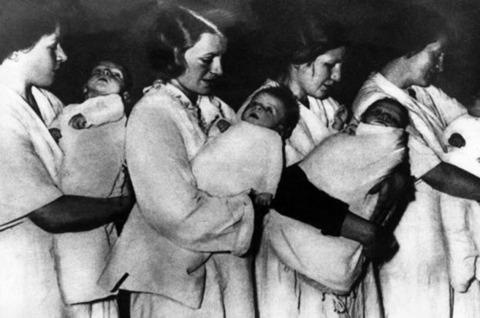Hildegard, fearing their disapproval, told her parents that she was “undertaking a residential course in National Socialism” and was escorted to an old castle in Bavaria, near the Tegernsee lake. There she found forty other girls, all living there under assumed names. “All you needed to be accepted there was a certificate of Aryan ancestry as far back at least as your great-grandparents”. The residence was very luxurious, with common rooms for sports and games, a library, music room and cinema, “the food was the best she had ever tasted”, and the place had servants. She also had to sign a declaration that “there had never been any cases of hereditary diseases, dipsomania or imbecility in her family”. Additionally, there was a document to sign in which she would be renouncing all claims to her child. Then, Trutz and other young girls were introduced to very good-looking SS officers. In the first week, Trutz was visited by the officer on three consecutive evenings. She immediately became pregnant and was transferred to a special home where she was given special care. After the baby was born, she breastfed him for two weeks and then the baby was taken to a special SS home where he was to be brought up as a loyal servant of the Nazi state. Trutz never discovered what became of her child and his eventual fate remained a mystery.
The complete story of Hildegard can be found in Giles Milton’s book Fascinating Footnotes from History
